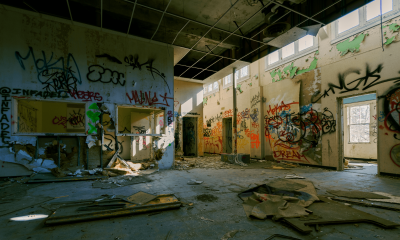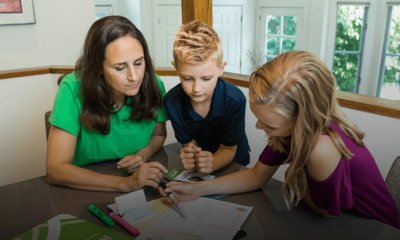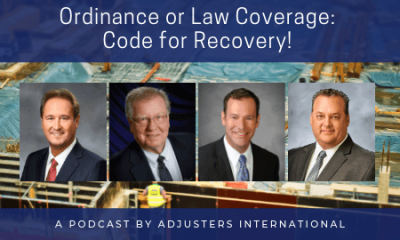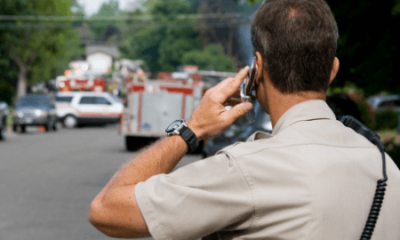Top 10 Communication Methods in a Disaster Setting
"During the 9/11 attacks only about 5% of respondents reported receiving information from cell phones, computers or tablets. Nearly 30% reported using these media after the Boston Marathon bombing."
1. Social Media
This feature allows users who are located within a certain distance of a natural disaster’s occurrence, to log in and tell friends if they’re safe and check to see if their loved ones have verified their safety as well.
b. Google Crisis Response
This is resource page provides tools, information and interactive platforms for both emergency responders and those in need of assistance. It includes access to Google Public Alerts (emergency alerts), Person Finder, Crisis Map, Docs & Spreadsheets, Fusion Tables, Google Earth and Google Sites. Each has their own special application and usage to assist for better communication methods in time of need.
2. Mobile Applications (Apps)
Cell phone apps are not only fun for playing games and keeping the kids occupied on a long car ride, they can also help in a disaster setting.
a. Life360
Life360 is a free app that allows access to a specific user’s location and also contains a messaging service feature. Automatic alerts can notify the user when a loved one arrives or checks-in at specified destinations as well.
b. FEMA app
This application gives users access to preparedness tips such as survival advice, emergency checklists, and meeting locations that can be saved to a mobile device. It gives the user access to weather alerts from the National Weather Service tailored to a specific area. Users can retrieve information on Disaster Recovery Centers, find locations of the nearest shelters and apply for assistance.
3. Cell phone
 Mobile networks quickly become overloaded due to the massive increase of users and unexpected surge that follows a disaster. Be sure not to discount text messaging and e-mails as a communications method as they work on a platform that is parallel to cell phones. Therefore, even if you cannot reach a person by calling them and the line is busy, a text or e-mail message may still be able to reach the specified destination.
Mobile networks quickly become overloaded due to the massive increase of users and unexpected surge that follows a disaster. Be sure not to discount text messaging and e-mails as a communications method as they work on a platform that is parallel to cell phones. Therefore, even if you cannot reach a person by calling them and the line is busy, a text or e-mail message may still be able to reach the specified destination.
4. Landline telephone
Perhaps not the most popular option anymore, but having a landline telephone can be a life saver when access to a cellphone or other electronic device is limited or non-existent. Depending on the type of technology supplied by your provider, it is possible that a landline telephone will work, even when internet access is down. Landline plans vary, but are surprisingly on the cheaper side and are well-worth the investment if for nothing else, peace of mind.
OK, all of these are great if power, internet, and access to these electronic devices is still available, but what will happen when they’re not? These next set of items can be used without power, cords, electricity, Wi-Fi access, etc.
"8,100,000 – Number of homes that lost power. The outages affected people in 17 states, as far west as Michigan."
Time Magazine on Hurricane Sandy
5. Satellite phone (Satphones)
Satellite phones are on the pricier side of the emergency devices spectrum, but are beneficial especially in remote territories where internet access is scarce at best. Some satellite phones have coverage in all parts of the world due to Satphone’s reliance on orbiting satellites for their functioning versus standard cell phone towers.
6. Two-Way radio
A two-way radio (also known as walkie-talkies) is a pair of handheld devices that can connect with each other provided both are on the same frequency, within a certain distance. One user can talk while the other listens and vice-versa. These are beneficial to have among emergency responders in the field as a quick way to communicate with each other without clogging up cell phone lines.
7. Citizens Band Radio (CB Radio)
 A CB radio is capable of short-distance communications on various frequencies. It is similar although more complex than a regular two-way radio as it contains more functionality. Because it is open for use for both business and personal use, it is a good source of general information.
A CB radio is capable of short-distance communications on various frequencies. It is similar although more complex than a regular two-way radio as it contains more functionality. Because it is open for use for both business and personal use, it is a good source of general information.
8. Amateur Radio (HAM Radio)
This product is similar to a CB radio besides that it requires the user to be a licensed American Amateur Radio operator; thus giving it a bit more authenticity to the information that is being regulated across the air waves.
9. Police Scanner
This device allows the user to hear all emergency communication between officials in the police, rescue, fire, respondent, military, and aircraft industries. Although the user cannot broadcast on it, it does allow access to important information during an emergency situation.
10. Word-of-Mouth
When all else fails, power is out, internet access is scarce, and devices are ruined or have not been purchased prior, it comes down to survival instincts. During a disaster setting it is important to have a plan in place beforehand and practice that plan prior to a disaster occurring. If you do not have a plan in place, try your best to not become isolated and stay together in a group to avoid being misplaced or lost.
For additional information, visit:












